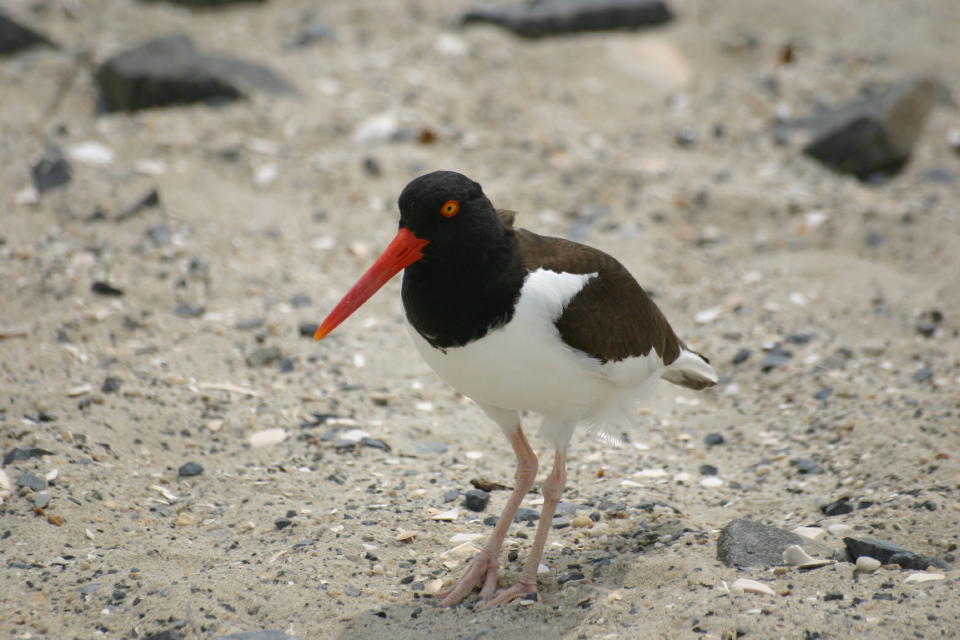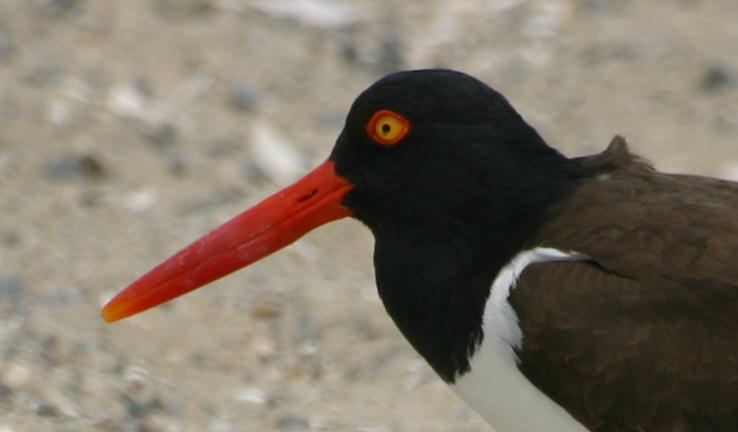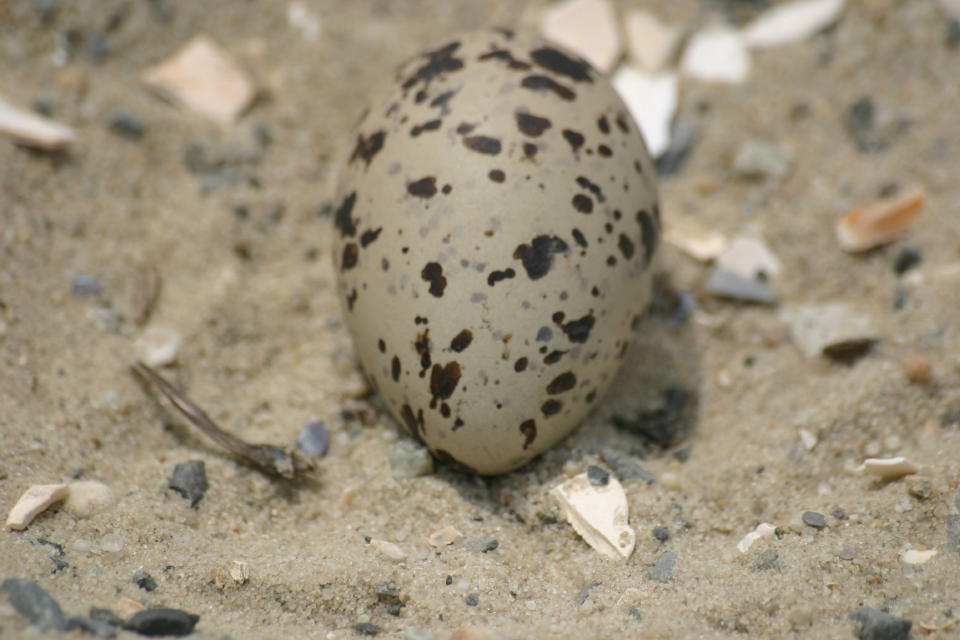 Last week, Mary Lou and I attended a birding Elderhostel at Cape May, New Jersey. We stayed at Little Egg Harbor, NJ with my brother and his wife for a few days before the program. This provided us the opportunity to bird in several nearby areas, including Estelle Manor State Park and the Brigantine (Forsythe) National Wildlife Refuge. We also visited Barnegat Inlet and walked the beach near the lighthouse. New Jersey’s oceanfront beaches are mostly open to the public. There are a few areas fenced off to protect nesting shorebirds, most notably the Piping Plover.
Last week, Mary Lou and I attended a birding Elderhostel at Cape May, New Jersey. We stayed at Little Egg Harbor, NJ with my brother and his wife for a few days before the program. This provided us the opportunity to bird in several nearby areas, including Estelle Manor State Park and the Brigantine (Forsythe) National Wildlife Refuge. We also visited Barnegat Inlet and walked the beach near the lighthouse. New Jersey’s oceanfront beaches are mostly open to the public. There are a few areas fenced off to protect nesting shorebirds, most notably the Piping Plover.
There were several school buses full of kids who were picnicking and walking with their teachers in groups on the beach. I noticed one group approaching a pair of American Oystercatchers. The birds became agitated and performed distraction displays, a response that suggested that the children were invading their nesting territory. I walked over to the location, and by using the same “reverse psychology” that has helped me locate Killdeer nests (moving in a direction opposite to where the birds tried to lead me), I quickly found a single egg in a scooped depression in the middle of the beach just above the high tide mark.
walking with their teachers in groups on the beach. I noticed one group approaching a pair of American Oystercatchers. The birds became agitated and performed distraction displays, a response that suggested that the children were invading their nesting territory. I walked over to the location, and by using the same “reverse psychology” that has helped me locate Killdeer nests (moving in a direction opposite to where the birds tried to lead me), I quickly found a single egg in a scooped depression in the middle of the beach just above the high tide mark.
The Oystercatcher sports an outlandish bright orange bill and has yellow eyes encircled by red rings. Remarkably, its bill is flattened vertically to permit it to probe inside the partially opened shell of a bivalve and sever the strong adductor muscle. It then devours the flesh of the hapless shellfish, often “washing” it before swallowing.
I photographed the birds and their egg, and quickly withdrew, but another large group of kids began walking right towards the nest. I intercepted them and informed their teacher, so they diverted their course to avoid the nest. There seemed to be no officials around to notify, so we departed feeling very pessimistic about the success of this nesting attempt.













May 23rd, 2007 at 5:52 am Fantastic photos!
May 16th, 2008 at 1:56 pm When walking on a local beach (south west Scotland) we came across an oystercatcher egg which was situated on stoney part of the sand. the sand/stones looked as though it ad been dug out slightly do you think this was its nest and do you know if this is were these birds hatch there eggs? un-beknown to my mum one of my friends had lifted the egg and put it in her pocket until we arrived back home, i am concerned she might have damaged it or worse! any response would be very much appreciated and i would be grateful for any advice on what to do with the egg thank you yours hopefully lois
Ken’s reply:
Lois, yes this was very likely the oystercatcher’s nest site, although any species of bird may occasionally “dump” an egg away from the intended nest site. It is not unusual for oystercatchers to lay their eggs in exposed places that may be in peril from human or other predators. This photo, from Flickr, is an example of such an inland site in Scotland that was used repeatedly: <http://flickr.com/photos/blackwych/2471374676/>
The best indicator that you are near an oystercatcher’s active nest is to observe the birds’ behavior. The pair often will approach quite closely, the nearer you get to the nest, and perform distraction displays and call loudly. Since your egg was located in a depression that was very possibly created as a nest site, the bird may have just started to lay its full clutch. Removal of one egg may cause the bird to abandon the site, although it is also quite possible that the oystercatcher went on to lay the remainder of its set of eggs– usually three.
Short of simply replacing the egg in the nest site in hopes that it is still viable and the parents might return, there is actually little more that can be done. It would be very difficult to try to incubate the egg artificially and try to care for the chick if it did hatch. As migratory birds, Eurasian Oystercatchers may be protected by international treaties, and it may be unlawful to possess its eggs or chicks anyway. In North America, egg hunters almost caused the extinction of the American Oystercatcher, but its population has rebounded since it was afforded protection.
I must confess that I made a similar mistake with a Killdeer (Plover) egg when I was a child, and you may wish to read about it in this blog entry: “Hatching a Plot”<http://blog.rosyfinch.com/?p=66>
So, unless you are able to find a qualified bird rehabilitator (local bird clubs may have information), consider this to be an important lesson that you and your friends have learned about the fragility of the web of life and your responsibility to respect nature’s laws.
Best wishes, and thank you for sharing this information.
Ken